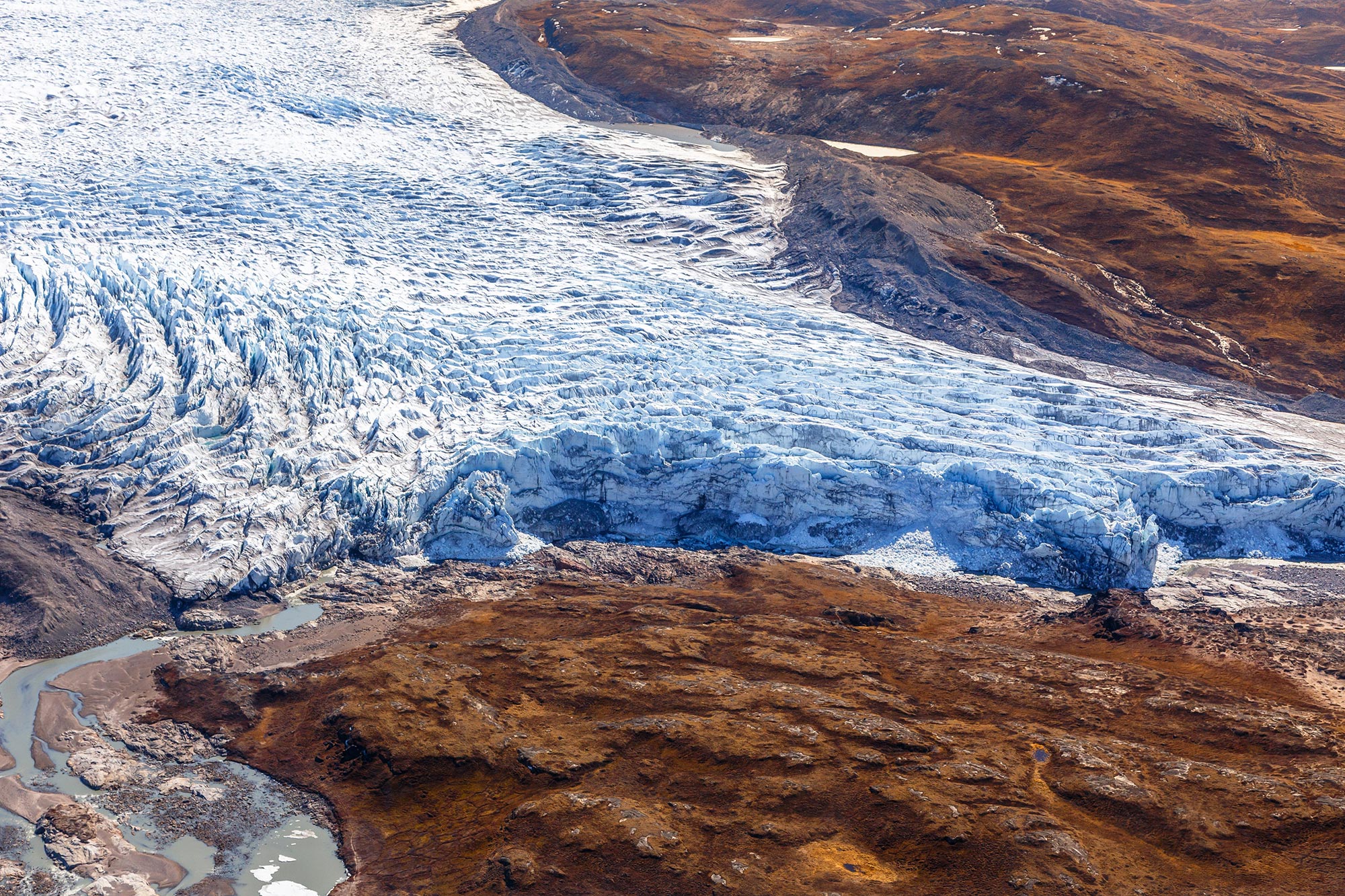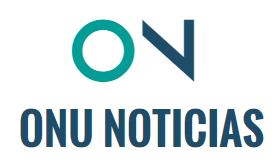
La nieve se está derritiendo a un ritmo alarmante en todo el mundo. Ya sea en las cimas de las montañas, en los polos, en los mares o en la tundra, ningún lugar es inmune. El hielo derretido revela nuevos terrenos, así como emocionantes oportunidades y peligros, como valiosos depósitos minerales, artefactos antiguos e incluso virus desconocidos. Esta situación merece atención inmediata, mientras navegamos por el territorio desconocido que se encuentra debajo del hielo que se derrite.
En todo el planeta, el hielo está desapareciendo rápidamente. Desde picos de montañas, polos, mares y tundra. A medida que el hielo se derrite, revela nuevas superficies, nuevas oportunidades y nuevas amenazas, incluidos valiosos depósitos minerales, restos arqueológicos, nuevos virus y más.
Derretimiento de glaciares y hielo marino
El Ártico se está calentando cuatro veces más rápido que el resto del planeta, lo que significa que los glaciares terrestres y el hielo marino, que flota en la superficie del océano, se están derritiendo rápidamente. Dos tercios del hielo marino del Ártico han desaparecido desde 1958, cuando se midió por primera vez. Entre 2000 y 2019, los glaciares del mundo perdieron 267 mil millones de toneladas de hielo cada año. Los glaciares del Himalaya están en camino de perder un tercio de su hielo para 2100, y se espera que los glaciares alpinos pierdan la mitad de su hielo.

Capa de hielo de Groenlandia. Crédito: Doctor Searls
Atado, dijo Jörg Schaefer, geoquímico del clima en el Observatorio Terrestre Lamont-Doherty de la Escuela de Clima de Columbia, que estudia el hielo en Groenlandia. “Todos los pronósticos son muy conservadores en términos de cambio: el cambio será mucho más rápido. Esto es cierto a nivel mundial. Pero Groenlandia puede ser una de las regiones donde estos pronósticos de cambio de hielo son muy conservadores debido a una variedad de factores climáticos”.
Debido al calentamiento global ya causado por la actividad humana, el derretimiento de Groenlandia elevará el nivel del mar 10,6 pulgadas, según un estudio reciente publicado en la revista

Some places, like Thailand, are already experiencing coastal flooding. Credit: Photo by Brigitte Leoni / UNISDR
The resulting potential sea level rise would spell disaster for the 680 million people who live in low-lying coastal areas around the world, a number expected to top one billion by 2050.
What lies under melting ice?
Fossil fuels and precious metals
Until recently, most exploitation of the Arctic’s oil and gas resources were on land. But summer ice cover in the Arctic could disappear as early as 2035, making the region more accessible to ships and providing new opportunities for fossil fuel extraction and mining.
The United States Geological Survey has estimated that about 30 percent of the world’s undiscovered gas and 13 percent of the world’s undiscovered oil may be found north of the Arctic Circle, mostly offshore in the ocean. In addition to these fossil fuels, the U.S. Congressional Research Service estimated that the Arctic contains one trillion dollars’ worth of precious metals and minerals.
Greenland has deposits of coal, copper, gold, nickel, cobalt, rare-earth metals, and zinc. As the melting ice uncovers land that has been inaccessible for thousands of years, prospectors are moving in.

The southwestern tip of Greenland. Credit: Doc Searles
Schaefer’s research involves sampling underneath Greenland’s ice and using isotope tools to figure out when the area was last ice-free in order to identify the most vulnerable segments of the Greenland ice sheet. He is often questioned by mineral consortiums. “They just want to know what is underneath the ice sheet. ‘Send us your rocks, we need to know what minerals are in there. And when is it gone? Or what does it take to melt it?’ They just want to get into these mineral deposits,” he said.
Valuable metals are also found in the deep seabed in the Arctic and elsewhere. Potato-like nodules on the Arctic Ocean floor contain copper, nickel, and rare earths such as scandium, used in the aerospace industry. Norway is exploring deep-sea mining of the ocean floor to exploit deposits of copper, zinc, cobalt, gold, and silver. The International Seabed Authority has already approved 30 contracts for seabed exploration.
Mining the ocean floor could cause serious harm to marine ecosystems, including to the plankton that are the basis of the food chain. And while deep sea mining companies claim their environmental impacts are less than those of land mining, much of the deep sea and its ecosystems remain largely unexplored. Several companies and environmental groups are calling for a global moratorium on deep seabed mining until its environmental impacts are better understood.

Nodules on the sea floor. Credit: Philweb
However, avoiding the worst impacts of climate change means transitioning from fossil fuels to renewable energy, which requires large quantities of minerals. As much as three billion tons of metals — including lithium, nickel, manganese, cobalt, copper, silicon, silver, zinc, iron ore, and aluminum — may be needed for technologies such as batteries for electric vehicles, wind turbines, solar panels, and other clean energy technologies. The World Bank estimates that the production of minerals could increase by nearly 500 percent by 2050 to meet the growing demand for renewable energy technologies.
One ecologically sound alternative to mining the exposed land or deep seabed would be to extract valuable metals from recycled electronic waste, but the reality is that only about 20 percent of e-waste is recycled—the rest is discarded. In any case, more precious metals than are currently in circulation will be needed to supply materials for the transition to clean energy. As a member of the Deep Sea Conservation Coalition said, “You can’t recycle what you don’t have.”
More shipping
Melting sea ice has opened up waterways in the Arctic, enabling shipping to increase by 25 percent between 2013 and 2019.

As a result of melting sea ice in the Arctic, new waterways have emerged, leading to a 25% rise in shipping activity between 2013 and 2019. Credit: NASA/Kathryn Hansen
As more oil tankers and bulk carriers traverse the region, the result has also been an 85 percent increase in black carbon mainly from their use of heavy fuel oil. When black carbon — a form of air pollution that results from the incomplete combustion of fossil fuels — lands on snow or ice, it darkens it and hastens melting. Black carbon also causes respiratory and cardiovascular illnesses in humans. The U.N.’s International Maritime Organization has banned the use of heavy fuel oil in the Arctic, but the ban won’t go into effect until 2029.
With the melting summer ice, cruise tourism is also increasing. In 2016, the first large cruise ship traversed the Arctic and stopped at Nome, AK. This summer, 27 cruise ships were scheduled to dock there. More cruise ships mean more carbon emissions that blacken the ice and disrupt marine ecosystems.

Permafrost thawing near the Yukon. Credit: Boris Radosavljevic
Thawing permafrost
Global warming is also causing the thawing of permafrost—ground that remains frozen for two or more consecutive years. It is found at high latitudes and high altitudes, mainly in Siberia, the Tibetan Plateau, Alaska, Northern Canada, Greenland, parts of Scandinavia and Russia. Permafrost, some of which has been frozen for tens or hundreds of thousands of years, stores the carbon-based remains of plants and animals that froze before they could decompose. Scientists estimate that the world’s permafrost holds 1,500 billion tons of carbon, almost double the amount of carbon currently in the atmosphere. As permafrost thaws, the microbes within consume the frozen organic matter and release carbon dioxide and methane into the atmosphere. This accelerates warming, precipitating even more permafrost thaw in an irreversible cycle. Scientists project that two-thirds of the Arctic’s near-surface permafrost could be gone by 2100.
When the ice in permafrost melts, the ground becomes unstable and can slump, causing rock and landslides, floods, and coastal erosion. The buckling earth can damage buildings, roads, power lines, and other infrastructure. It is affecting many Indigenous communities that have lived and depended on the stability of frozen permafrost for hundreds of years.
What lies under thawing permafrost?
Microbes
As permafrost thaws, bacteria and viruses that have been hidden underground for tens of thousands of years are being uncovered. One gram of permafrost was found to harbor thousands of dormant microbe species. Some of these species could be new viruses or ancient ones for which humans lack immunity and cures, or diseases that society has eliminated, such as smallpox or Bubonic plague. In 2016, a hundred people in Siberia were hospitalized and a boy died after contracting anthrax from an infected reindeer carcass that had frozen 75 years earlier and become exposed when the permafrost thawed. Anthrax spores entered the soil and water, and eventually the food supply.
Much older specimens have also been uncovered. Scientists have revived a 30,000-year-old virus that infects amoebas and discovered microbes more than 400,000 years old. Some of these microorganisms may already be resistant to our antibiotics.
Pollutants
Because the Arctic has been covered by ice and permafrost for much of human history and was largely inaccessible, it was an ideal place to dump chemicals, biohazards, and even radioactive materials. The risks these materials pose in the light of thawing permafrost are poorly understood.
Radioactive waste from nuclear reactors and submarines, nuclear testing, and dumped nuclear waste can be exposed by melting ice and thawing permafrost. Chemicals and pollutants, such as DDT and PCBs, that were transported through the atmosphere and frozen in the permafrost, may also resurface. Heavy metal mine waste resulting from decades of extensive mining in the Arctic is found in permafrost as well.
The increased water flow resulting from thawing permafrost will enable pollutants and microorganisms to spread more easily, with potential risks to ecosystems, local communities, and the food chain. The increase in cruise ships, tourism, mining, and commerce in the Arctic could also expose more people to pathogens and pollutants.

Melting ice sheet in Greenland. Credit: NASA/Saskia Madlener
Is there anything positive about melting glaciers and thawing permafrost?
There are many disasters that could result from melting glaciers and thawing permafrost, but there may also be a few potential benefits.
One study found that the new shipping routes opened by melting ice in the Arctic could reduce the travel time between Asia and Europe substantially. The Arctic routes are 30 to 50 percent shorter than the Suez Canal and Panama Canal routes and can cut travel time by 14 to 20 days. Ships will thus be able to reduce their greenhouse gas emissions by 24 percent, while saving money on fuel and ship wear and tear.
New mining opportunities in previously inaccessible areas and in the deep sea will make it possible to obtain the quantities of rare and precious metals needed to transition to a clean energy economy. The chairman of the Metals Company said, “The reality is that the clean-energy transition is not possible without taking billions of tons of metal from the planet.”
The microbes and viruses that have lived in the permafrost for millennia had to develop many adaptations to withstand the harsh environment and may help to develop new antibiotics. To survive, bacteria competed with each other by producing antibiotics, some of which may be entirely new. While some microbes have been found to be antibiotic resistant, others might be able to help develop new antibiotics for medical use. In Arctic soil uncovered by thawing permafrost, scientists discovered new bacteriophages—bacteria eaters—each one of which consumes a different bacterium.

A tunic found in the Norway mountains. Credit: Marianne Vedeler
Researchers found one bacterium that could survive in cold and biodegrade oil in contaminated Arctic soil; the bacterium was able to take up 60 percent of the oil around it. This could potentially help clean up oil spills in the Arctic. Two other bacteria species recovered from thawing permafrost were found to degrade dioxins and furans, volatile liquids, which could aid in remediating contaminated sites. One researcher is studying whether organisms in permafrost can produce enzymes that break down plastics.
The melting ice and thawing permafrost have also revealed geography and ancient artifacts that are deepening archaeologists’ understanding of history and culture. In the mountains of Norway, melting ice revealed a remote ancient mountain pass and artifacts from the Roman Iron Age and the time of the Vikings. The pass was an important path for moving livestock between grazing sites and a passageway for travel and trade. Researchers also found numerous tools, artifacts, and weapons that had belonged to the Vikings. In the Jotunheimen Mountain Range of Norway, archaeologists discovered an iron arrowhead dating back to the Norwegian Iron Age.

Ernest Shackleton Endurance shipwreck. Credit: Falklands Maritime Heritage Trust
This year, when Antarctic sea ice cover hit a record low, researchers in the Weddell Sea, a remote part of the Antarctic, were searching for the wreckage of Sir Ernest Shackleton’s ship, Endurance. It had been trapped by the sea ice and sunk in 1915.
They were able to find the ship almost 9,900 feet underwater, due in part to reduced ice cover.
In the thawing permafrost of the Yukon, scientists found a perfectly preserved wolf pup that lived 57,000 years ago during the Ice Age, camel bones from 75,000 to 125,000 years ago, and teeth from a hyena-like creature that lived 850,000 to 1.4 million years ago. Because the specimens are well-preserved and contain genetic material, they can help scientists understand how species responded to climate change and human impacts long ago.
As the planet warms, some countries and regions will lose out, while others will benefit. For example, Siberia will likely become a huge wheat producer, and Canada a major wine producer.
Greenland’s economy currently relies on fishing, tourism, and hunting but it will need to exploit its natural resources to support an aging population. The sand and sediment released by Greenland’s melting glaciers could be worth more than $1.11 billion because the world faces a severe shortage of the sand needed to make concrete, computers, and glass. While dredging sand and transporting it could cause environmental damage, a clear majority of Greenlanders polled want their government to explore the extraction and exportation of sand.
As Greenland’s glaciers retreat, they also leave behind silt crushed into nano-size particles by the weight of the ice. This nutrient-rich mud, called glacial rock flour, gives plants more access to nutrients such as potassium, calcium, and silicon, while absorbing CO2 from the air. Adding 27.5 tons of glacial rock flour per hectare increased barley yields in Denmark by 30 percent. Applying 1.1 tons of it to fields absorbs between 250 and 300 kilograms of CO2. The more than one billion tons of glacial rock flour deposited yearly on Greenland could enable farmers to sell carbon credits because of the CO2 absorbed, and boost the country’s economy.

Map of the Arctic. Credit: Rosie Rosenberger
The changes raise complex questions
Ultimately, these relatively small potential benefits cannot outweigh the enormous impacts climate change will have on local communities and the planet. “Do I believe that these kinds of changes [mining and shipping opportunities] ¿Traducirse en algo positivo para la comunidad más amplia del planeta? dijo Schaefer. “[They] Enriquecerá aún más a una pequeña minoría de capitalistas que ya son increíblemente ricos”.
Ocho naciones reclaman tierras en el Ártico: Canadá, Dinamarca (porque Groenlandia fue su antigua colonia), Finlandia, Islandia, Noruega, Rusia, Suecia y Estados Unidos, algunas con reclamos geológicos superpuestos. A medida que la región se calienta y surgen nuevas oportunidades de explotación, los países “cerca del Ártico” como China, Japón, Corea del Sur, Gran Bretaña y los miembros de la Unión Europea también se están enfocando más en la región. “El Ártico será un futuro campo de batalla por el dominio económico y la posesión de los recursos naturales”, advirtió la analista de inteligencia Rebecca Koffler.
Es un hecho geológico que cuando el hielo se derrita y el permafrost se descongele, muchas superficies quedarán expuestas. Shafer cree que lo mejor que se puede hacer es endurecer las leyes para que los forasteros o las corporaciones privadas ricas no puedan simplemente explotar los recursos sin ninguna responsabilidad con el planeta o las personas que poseen la tierra.
La cuestión de quién se beneficiará de los efectos del cambio climático, y del derretimiento y derretimiento de las regiones en particular, es compleja. Schaefer cree que estos problemas se están alejando de la ciencia climática hacia la ley y la ética, y que quizás el mejor marco para resolverlos es priorizar la justicia climática. Dijo: “Las voces y las voces de las personas que viven allí y son propietarias de la tierra deben estar en el centro de todo”.
Referencia: “Disrupción climática de la capa de hielo de Groenlandia y aumento del nivel del mar comprometido” por Jason E. Box, Alun Hubbard y David B. Barr, William T. Colgan, Xavier Vitoys, Kenneth D. Mankoff, Adrian Werley, Bryce Noel y Michelle R. van den Broeke, Bert Wouters, Anders A. Bjørk y Robert S. Fausto, 29 de agosto de 2022, disponible aquí. La naturaleza del cambio climático.
DOI: 10.1038/s41558-022-01441-2

“Futuro ídolo adolescente. Explorador amigable. Alborotador. Especialista en música. Practicante ávido de las redes sociales. Solucionador de problemas”.





More Stories
Compensar el sueño los fines de semana puede reducir el riesgo de enfermedad cardíaca en una quinta parte: estudio | Cardiopatía
¿Cómo se hicieron los agujeros negros tan grandes y rápidos? La respuesta está en la oscuridad.
Una estudiante de la Universidad de Carolina del Norte se convertirá en la mujer más joven en cruzar las fronteras del espacio a bordo de Blue Origin